-
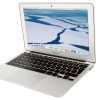 +6 +1
+6 +1Apple 11-inch MacBook Air (early 2015) review
Apple has denied it the latest upgrades, but the 11-inch MacBook Air remains a cute, capable laptop.
-
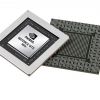 +6 +1
+6 +1Nvidia re-enables lock on GTX 980M clock speeds in recent driver updates
Nvidia has angered gamers once again after enabling a previous "clockblock" on 980M mobile chips which makes it impossible to overclock them.
-
 +13 +2
+13 +2Researchers first to create a practical single-molecule diode
Researchers at Columbia University School of Engineering have designed a new technique to create a single-molecule diode, and, in doing so, they have developed molecular diodes that perform 50 times better than all prior designs.
-
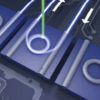 +12 +2
+12 +2Nanophotonics: Chronicling the rise of tiny optical devices
The squeezing of light down to incredibly small scales is attractive in many areas, in particular computation: Researchers believe the barriers presented with developing electronics to keep up with Moore's Law, in the form of bandwidth and energy dissipation, may be overcome using light-based technologies.
-
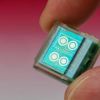 +13 +1
+13 +1A chip placed under the skin for more precise medicine
It's only a centimeter long, it's placed under your skin, it's powered by a patch on the surface of your skin and it communicates with your mobile phone. The new biosensor chip is capable of simultaneously monitoring the concentration of a number of molecules, such as glucose and cholesterol, and certain drugs.
-
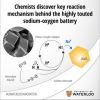 +2 +1
+2 +1Chemists discover key reaction mechanism behind the highly touted sodium-oxygen battery
Chemists have discovered the key reaction that takes place in sodium-air batteries that could pave the way for development of the so-called holy grail of electrochemical energy storage.
-
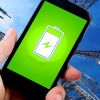 +15 +4
+15 +4A Weird New Way To Extend Your Phone Battery
Don’t you hate it when your cell phone battery dies? Well, scientists are trying to make sure it never happens again!
-
 +2 +1
+2 +1Google Unveils Brillo, Its Answer for Smartifying Your Home
The Internet of Things remains fragmented and frustrated. Google things it has the answer.
-
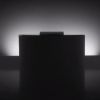 +18 +7
+18 +7The creation of the modern laptop
The world's first commercial laptop—though that is certainly stretching the term—was the Osborne 1. When released in 1981, it cost $1,795, weighed 10.7kg (23.5lbs), and ran an operating system called CP/M. The 1983 Compaq Portable, which ran MS-DOS, was even larger (13kg) and cost $3,590. Neither had a battery, though an aftermarket battery for the Osborne 1 lasted an hour.
-
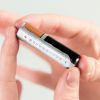 +2 +1
+2 +1Batteriser is a $2.50 gadget that extends disposable battery life by 800 percent
Count the number of alkaline batteries in your house. Now consider replacing those batteries eight times less often. If Batteriser delivers, it could be a game changer.
-
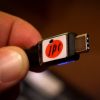 +13 +3
+13 +3USB-C has already won
As it likes to do, Apple recently released a product before the world was ready. The new 12-inch MacBook has but a single port — unless you count the headphone jack — and it’s a completely new connector that almost no one has ever used before, breaking direct compatibility with millions of standard USB devices. But that connector, known as USB Type-C or just USB-C, is likely to become one of the most ubiquitous advances in the recent history of computing and consumer electronics.
-
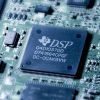 +10 +2
+10 +2How to: Get Free Electronic Parts for your Projects
Don't you hate it when you're working on your next project and realize you're short a resistor or capacitor? You have two choices: Buy online, pay for shipping, and wait a week or go to your local Radio Shack and pay ridiculous prices to acquire what you need.
-
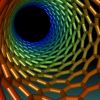 +11 +2
+11 +2The next wave: micro-circuits embedded in clothing
Breakthroughs in low power consumption circuitry, sensors and flexible/bendable circuit boards are enabling the dramatic advancement of this rapidly emerging market segment.
-
 +14 +2
+14 +2World's thinnest light bulb is just one atom thick
Scientists have created the world's thinnest light bulb using the wonder material graphene, in a layer just one atom thick. Graphene – a form of carbon – has been heralded as having a vast range of uses. The ability for the super-thin material to produce light is seen as a key step to create super-thin computer and TV screens.
-
 +18 +3
+18 +3The town that banned Wi-Fi
‘Electrosensitive’ people are flocking to the West Virginian home of a deep-space telescope, attracted by the rules prohibiting phones, TVs and radios. But, as Ed Cumming reveals, their arrival means Green Bank is far from peaceful
-
 +17 +3
+17 +3How to Build a Raspberry Pi Jukebox Any Non-Geek Can Use
You have a ton of options for accessing your computer’s music library from your stereo, but most require a bit of technical know-how to actually use. You can build a jukebox with a Raspberry Pi, a tiny micro-computer, that anyone can use, even if they don’t know what a Raspberry Pi is.
-
 +8 +3
+8 +3How It’s Made Series: Beats By Dre
Is there more to Beats than meets the eye?
-
 +14 +1
+14 +1New manufacturing approach slices lithium-ion battery cost in half
An advanced manufacturing approach for lithium-ion batteries, developed by researchers at MIT and at a spinoff company called 24M, promises to significantly slash the cost of the most widely used type of rechargeable batteries while also improving their performance and making them easier to recycle.
-
 +16 +1
+16 +1Graphene-sheathed copper wires could dramatically speed future processors, cut power consumption
New research into graphene's potential shows that it could be used to boost the performance of copper wires inside semiconductors. If true, this could clear one of the most significant bottlenecks to modern CPU performance.
-
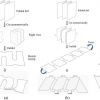 +11 +1
+11 +1How Origami Makes Rigid Lithium-Ion Batteries Stretchable
Researchers have shown that rigid lithium-ion batteries can be made more suitable for smart watches and other flexible electronics.
Submit a link
Start a discussion




















